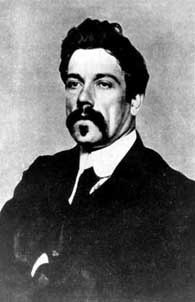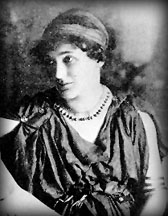
James Augustine Aloysius Joyce was an Irish novelist, short story writer, poet, teacher, and literary critic. He contributed to the modernist avant-garde movement and is regarded as one of the most influential and important writers of the 20th century. Joyce is best known for Ulysses (1922), a landmark work in which the episodes of Homer's Odyssey are paralleled in a variety of literary styles, most famously stream of consciousness. Other well-known works are the short-story collection Dubliners (1914), and the novels A Portrait of the Artist as a Young Man (1916) and Finnegans Wake (1939). His other writings include three books of poetry, a play, his published letters and occasional journalism.

The Abbey Theatre, also known as the National Theatre of Ireland, in Dublin, Ireland, is one of the country's leading cultural institutions. First opening to the public on 27 December 1904, and despite losing its original building to a fire in 1951, it has remained active to the present day. The Abbey was the first state-subsidized theatre in the English-speaking world; from 1925 onwards it received an annual subsidy from the Irish Free State. Since July 1966, the Abbey has been located at 26 Lower Abbey Street, Dublin 1.

Isabella Augusta, Lady Gregory was an Irish dramatist, folklorist and theatre manager. With William Butler Yeats and Edward Martyn, she co-founded the Irish Literary Theatre and the Abbey Theatre, and wrote numerous short works for both companies. Lady Gregory produced a number of books of retellings of stories taken from Irish mythology. Born into a class that identified closely with British rule, she turned against it. Her conversion to cultural nationalism, as evidenced by her writings, was emblematic of many of the political struggles to occur in Ireland during her lifetime.

Maud Gonne MacBride was an English-born Irish republican revolutionary, suffragette and actress. Of Anglo-Irish descent, she was won over to Irish nationalism by the plight of evicted people in the Land Wars. She also actively agitated for Home Rule. She is well known for being the muse and long-time love interest of Irish poet W. B. Yeats.

Edmund John Millington Synge was an Irish playwright, poet, writer, collector of folklore, and a key figure in the Irish Literary Revival. His best known play The Playboy of the Western World was disapproved due to its bleak ending, depiction of Irish peasants, and idealisation of parricide, leading to hostile audience reactions and riots in Dublin during its opening run at Abbey Theatre, Dublin, which he had co-founded with W. B. Yeats and Lady Gregory. His other major works include "In the Shadow of the Glen" (1903), "Riders to the Sea" (1904), "The Well of the Saints" (1905), and "The Tinker's Wedding" (1909).

Edward Dowden, was an Irish critic and poet.

Thomas Sturge Moore was a British poet, author and artist.
The Irish Literary Revival was a flowering of Irish literary talent in the late 19th and early 20th century.
W. B. Yeats, Lady Gregory and Edward Martyn published a "Manifesto for Irish Literary Theatre" in 1897, in which they proclaimed their intention of establishing a national theatre for Ireland.
The Countess Kathleen and Various Legends and Lyrics (1892) is the second poetry collection of W. B. Yeats.
Events from the year 1899 in Ireland.

Pearse Street is a major street in Dublin. It runs from College Street in the west to the MacMahon Bridge in the east, and is one of the city's longest streets. It has several different types of residential and commercial properties along its length.

Cathleen ni Houlihan is a one-act play written by William Butler Yeats and Lady Gregory in 1902. It was first performed on 2 April of that year and first published in the October number of Samhain. Lady Gregory wrote the naturalistic peasant dialogue of the Gillane family, while Yeats wrote Cathleen Ni Houlihan’s dialogue.
This is a list of all works by Irish poet and dramatist W. B. Yeats (1865–1939), winner of the 1923 Nobel Prize in Literature and a foremost figure in 20th-century literature. Works sometimes appear twice if parts of new editions or significantly revised. Posthumous editions are also included if they are the first publication of a new or significantly revised work. Years are linked to corresponding "[year] in poetry" articles for works of poetry, and "[year] in literature" articles for other works.
Robert Anthony Welch was an Irish author and scholar.

Samhain was a theatrical periodical published irregularly, with an annual in December. The Irish poet W. B. Yeats was a regular and leading contributor of essays outlining his artistic principles. It existed between 1901 and 1908.

Máire Nic Shiubhlaigh | Máire Nic Ṡiúḃlaiġ was an Irish actress and republican activist. She started acting in her teens and appeared in the first Irish-language play performed in Ireland. She was a founder-member of the Abbey Theatre and was leading lady on its opening night in 1904, when she played the title role in W.B. Yeats's Cathleen Ni Houlihan. She later joined the Theatre of Ireland, which she helped to found.
The Abbey Theatre School or the Abbey School of Acting, was a drama school associated with the Abbey Theatre, Dublin, Ireland. Established in 1911 by W. B. Yeats, it was developed by Lady Gregory to continue performances in Dublin while the main cast of the theatre was overseas, usually in America.

Irische Legende is a 1955 opera by Werner Egk who also wrote the libretto after the 1892/1899 verse drama The Countess Cathleen by W. B. Yeats. It premiered at the Salzburg Festival on 17 August 1955.
Helen Laird (1874–1957), was an Irish actress also known as ‘Honor Lavelle’, a costumier, teacher, and feminist.












